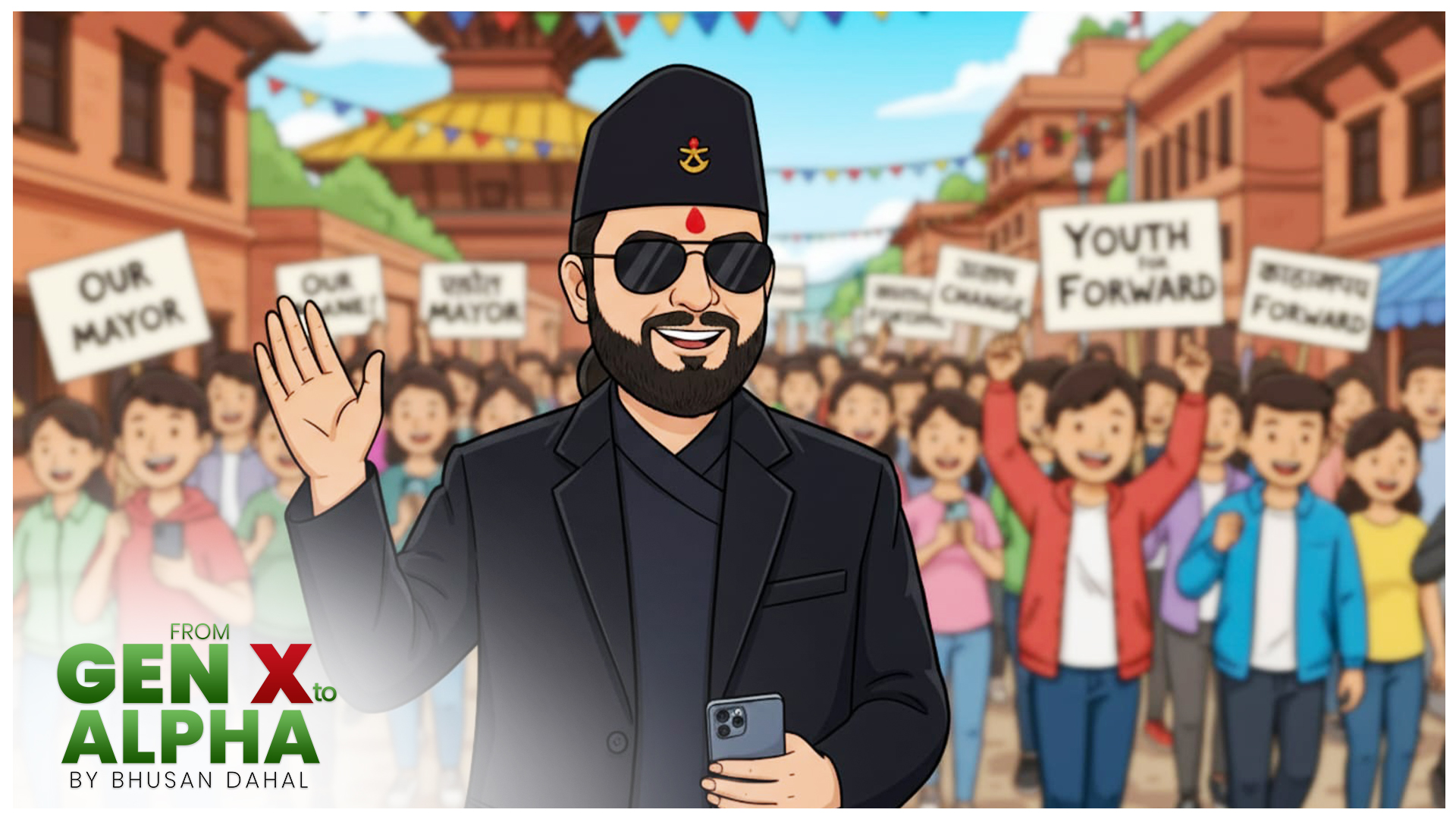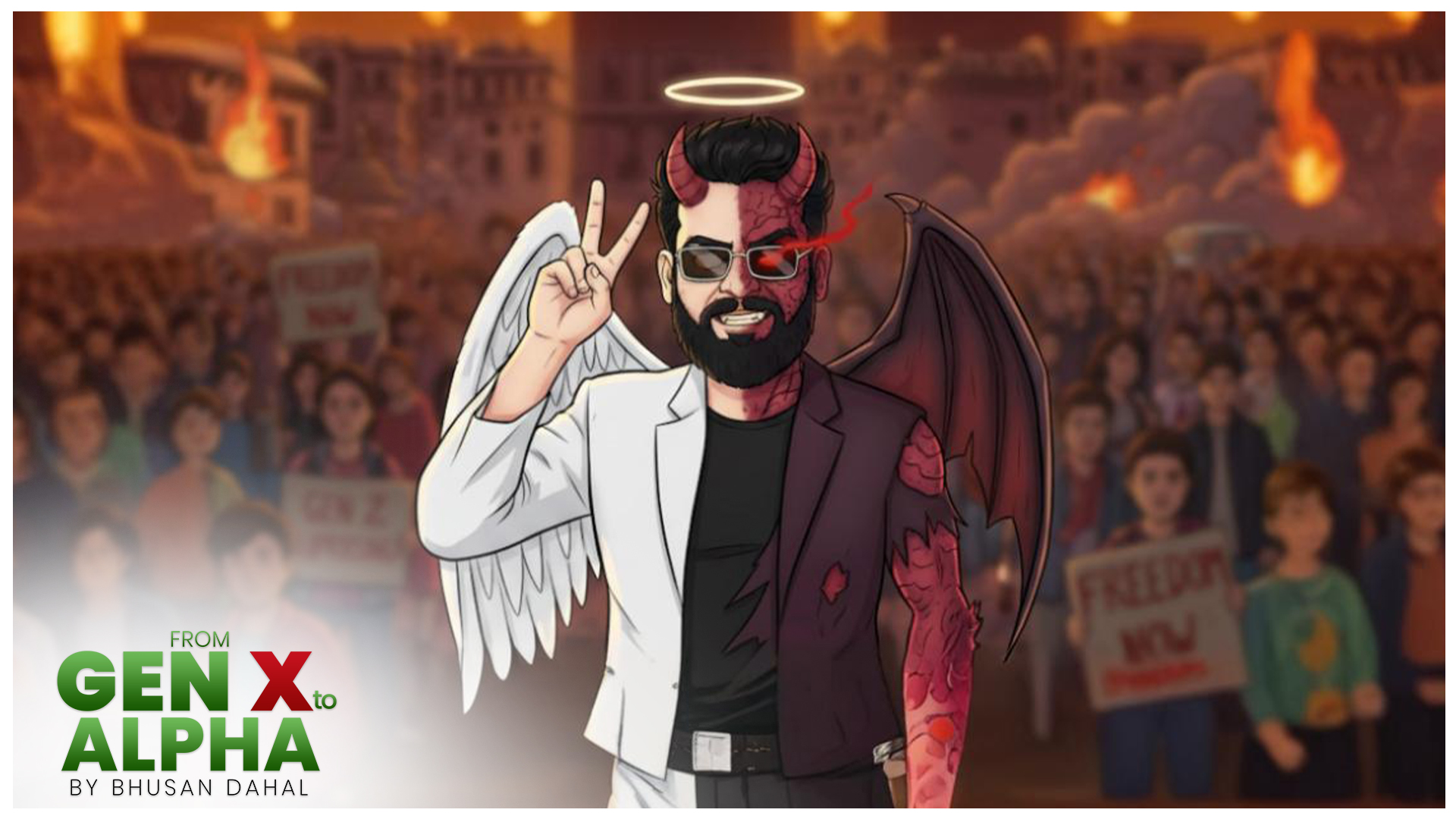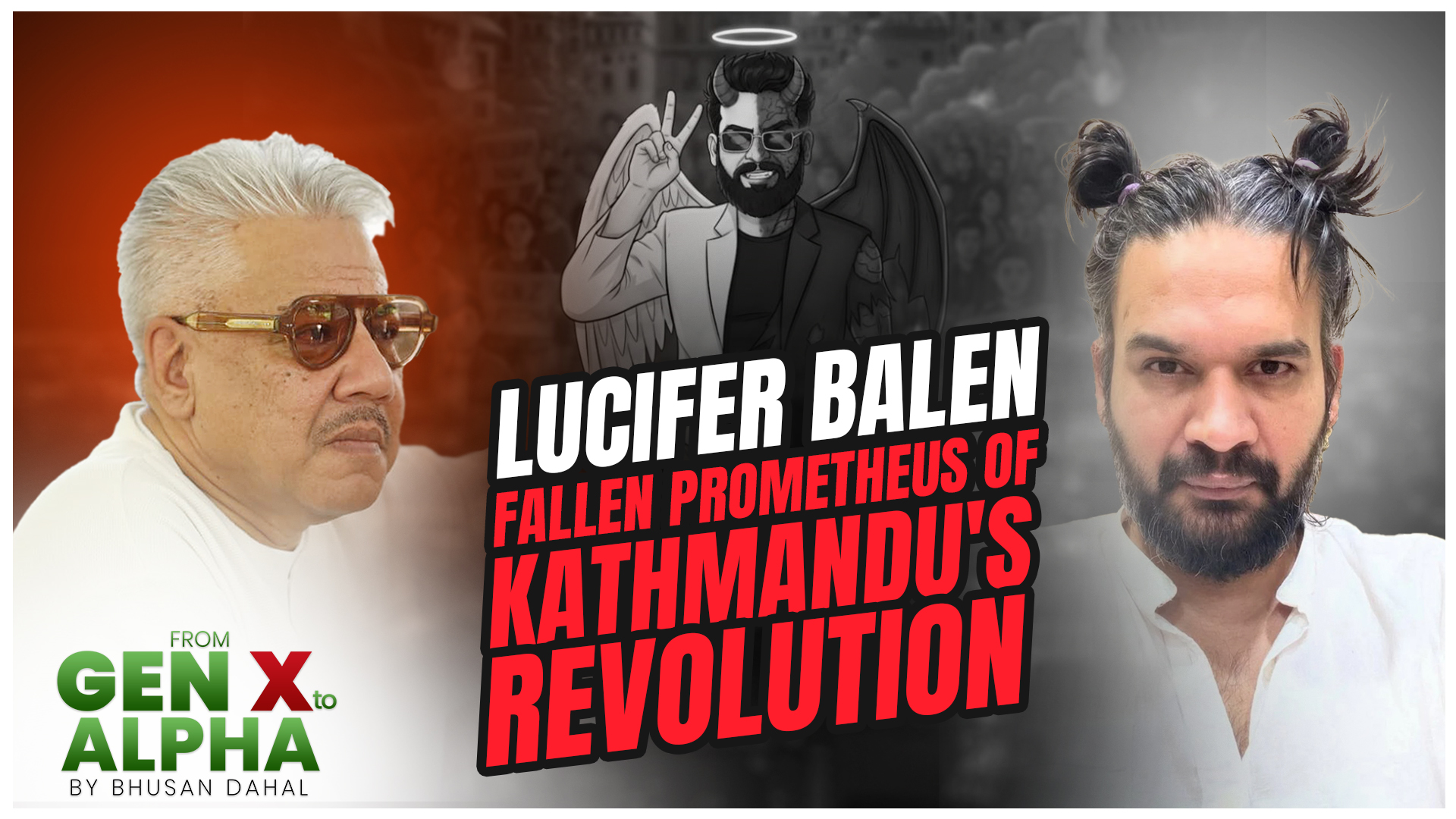In the shadow of the Himalayas, where ancient temples meet the digital age’s fury, Balendra Shah-better known as Balen stands as both savior and scapegoat. The 35-year-old mayor of Kathmandu, a former rapper with a engineer’s precision and a rebel’s fire, has become the improbable epicenter of Nepal’s turbulent September. Once hailed as the voice of a disillusioned youth, he now grapples with the moniker “Lucifer,” thrust upon him by critics amid the ashes of a Gen Z revolt that scorched the nation’s political landscape. But like the biblical figure he evokes, Balen’s story is one of light and shadow, rebellion and reckoning-a tale where symbols shift with the beholder’s gaze, much like democracу itself.

From Rap Bars to City Hall: The Rise of Balen Shah
Balen’s ascent defies Nepal’s entrenched political dynasties. Born in 1990 in Kathmandu, he traded structural blueprints for sharp-tongued hip-hop tracks that lambasted corruption and inequality. Songs like those railing against “thieves looting the country” resonated with a generation stifled by unemployment and nepotism. In 2022, running as an independent, Balen stunned the establishment by clinching the Kathmandu mayoralty with over 61,000 votes-a “Balen effect” that rippled across Nepal, inspiring young independents nationwide. His governance style is as unfiltered as his music: live-streamed council meetings, bulldozing illegal structures, and public shaming of negligent officials. Garbage strewn streets began to clean up; traffic snarls eased. To his fans, he was no mere bureaucrat but a disruptor, a light-bearer in a city choked by smog and scandal. Yet Balen’s charisma is laced with enigma. Не rarely grants interviews, preferring cryptic social media posts that blend policy updates with philosophical musings. This stealth elusive as a Himalayan mist fuel both adoration and suspicion. Supporters see a principled loner; detractors, a calculating operator pulling strings from the shadows. As one on X @adhramita quipped amid the chaos, “Sun rose too early? Balen Shah. Your Wi-Fi is slow? Balen Shah.” In a nation where leaders are often caricatured as puppets, Balen’s opacity adds spice to the controversy, turning him into a Rorschach test for Nepal’s fractured psyche.

The September Inferno: Gen Z’s Revolt and the Shadow of Destruction
The backdrop to “Lucifer Balen” is a blaze that nearly consumed Nepal. On September 8, 2025, what began as a peaceful rally against a draconian social media ban-imposed amid rampant corruption scandals-erupted into the bloodiest youth uprising in decades. Gen Z, under-28 protesters in school uniforms and with books in hand, marched on Kathmandu, Pokhara, Itahari and quite a few other addresses demanding not just lifted restrictions but systemic overhaul. The government’s response was swift and brutal: security forces fired on crowds scaling parliament walls, killing 19-many teenagers still in college attire-and injuring over 345. Arson followed: Parliament, the executive premise and judiciary torched, the presidential residence gutted, media houses and private properties aflame, shopping malls looted. Prime Minister КР Sharma Oli resigned on September 9, the ban was rescinded, and former Chief Justice Sushila Karki (74) stepped in to lead an interim government. Balen, too old for the under-28 banner at 35, watched from City Hall. In a pivotal Facebook post, he declared full sympathy for the “spontaneous Gen Z movement,” urging politicians not to hijack it for party gain and asking, “What kind of country do you want to see?” His words ignited online fervor: #BalenForPM trended globally, dubbing him “Nepal’s potential prime minister without personal interest.” Half of Nepal’s population under 30 saw in him credible face for change-an anti-corruption warrior who could bridge rap’s raw energy with governance’s grind. But as the smoke cleared, so did the illusions. Balen’s post-revolt silence shifting to mundane municipal updates stirred discontent even among allies. Whispers grew: Did his endorsement embolden the chaos? Was he the hidden architect, or merely a bystander profiting from the pandemonium? The destruction estimated in billions of rupees, with irreplaceable cultural sites scarred demanded a villain. Some pointed fingers at foreign meddlers or party agitators, but increasingly, at Balen. “Encouraging violence,” one critic charged, linking him to “wet dreams of Greater Nepal” and anti-India rhetoric. In this blame game, Balen became the fall guy for a revolt that spiraled beyond anyone’s control.

The Lucifer Label: A Moniker Born in Fire
The epithet “Lucifer” crystallized in the revolt’s aftermath. Commentator Saurab, in a viral interview with journalist Tikaram Yatri, branded Balen as such-evoking the “morning star” fallen from grace, a symbol of hubris and infernal ambition. The remark exploded online, spawning memes, threads, and a polarized lexicon: #LuciferBalen trended alongside defenses portraying him as a “dark agent dismantling mafia strongholds. What began with one voice echoed through many, turning a theological metaphor into a political weapon. Lucifer, after all, is no monolith. In Christian lore, he’s the prideful angel cast from heaven, embodying temptation and evil-a cautionary tale of rebellion’s cost. Yet to Gnostics and esoteric thinkers, he’s Prometheus unbound, the light-bringer gifting knowledge to humanity, challenging tyrannical order. Modern Satanists recast him as individualism’s icon, a defiant spark against conformity. Balen, in this mirror, reflects these facets: To Gen Z devotees, he’s the enlightener, his rap-fueled critique illuminating corruption’s underbelly. To old- guard loyalists, he’s the destroyer, his “stealth and illusive personality” a devilish sleight-of-hand fanning flames for personal gain. This duality spices the controversy, much like democracy-a system venerated as freedom’s bulwark by some, decried as mob rule or elite capture by others. Balen’s Lucifer tag argues the same ambiguity: Is he the revolt’s unintended casualty, blamed for destruction he neither ignited nor quelled? Or a cunning provocateur, whose silence post-uprising betrays complicity? Critics decry his alleged ties to external forces US ambassadors, shadowy cabals-while fans rap odes to his “steel soul” tearing down the wicked. In Nepal’s echo chambers, Lucifer Balen is democracy incarnate messy, multifaceted, and eternally contested.

A Nation at the Crossroads: Hero, Devil, or Something In Between?
As Sushila Karki’s interim regime stabilizes the rubble, Balen’s path forks dramatically. Gen Z campaigns persist, with X pleas like “Balen Dai, take the lead. Nepal is behind you.” International eyes-from Time magazine’s emerging leaders list to Reuters spotlights-watch warily, pondering if this bearded ex-rapper could helm the nation. Yet the Lucifer shadow lingers, a reminder that revolutions devour their symbols. Balen’s elusiveness refusing Saurab’s barb, dodging the national stage-only heightens the intrigue. Is he biding time for a PM bid, or retreating from the inferno he helped stoke? In Kathmandu’s labyrinthine alleys, where incense mingles with tear gas residue, Balen Shah embodies Nepal’s paradox: a light-bearer fallen into controversy, a democrat cast as devil. Like Lucifer, his legacy hinges on interpretation. To the youth he inspired, he’s redemption’s promise. To those he displaced, apocalypse incarnate. And to history? Perhaps the spice that makes democracy’s brew palatable-or poisonous. As one observer noted amid the blame, “Whether you love him or hate him… this man’s single post sparked the entire overturn.” In the end, Lucifer Balen isn’t just a mayor; he’s a mirror, reflecting the chaos we all court in the name of change.









HERO, DEVIL, OR SOMETHING IN BETWEEN ?
Political Parties Have Failed Nepal for Three Decades
For the past thirty years, Nepal’s major political parties have failed miserably to deliver good governance, accountability, or progress. Yet, none of them is willing to take responsibility for this failure. Their new scapegoat is the Mayor of Kathmandu. For the past two years, they have used every possible tactic to discredit him—but they could not break his resolve or his public support. Now, they have adopted a new strategy: engaging foreign governments, NGOs, and INGOs. Ironically, the same political parties that accuse others of foreign influence have built vast networks of NGOs at home and abroad that act as their financial collection agents—deeply tied to foreign donors and interests. Nepal’s people deserve transparency and independence, not politics driven by foreign interests or influenced by party networks.